Mountain Resort and its Outlying Temples

Construction of the Mountain Resort began in 1703 by the mandate of the Kangxi emperor (r. 1662-1722). Spanning three reigns, the Kangxi, Yongzheng and the Qianlong (1662-1795), it took 89 years to complete. The Mountain Villa to Escape the Heat (Bishu shanzhuang) was a Qing Dynasty imperial summer resort where emperors could recreate and handle state affairs. As the largest existing imperial garden in China, it is characterized by villages nestled among mountains, and integrates the scenery of regions both south of the Yangtze River and north of the Great Wall.
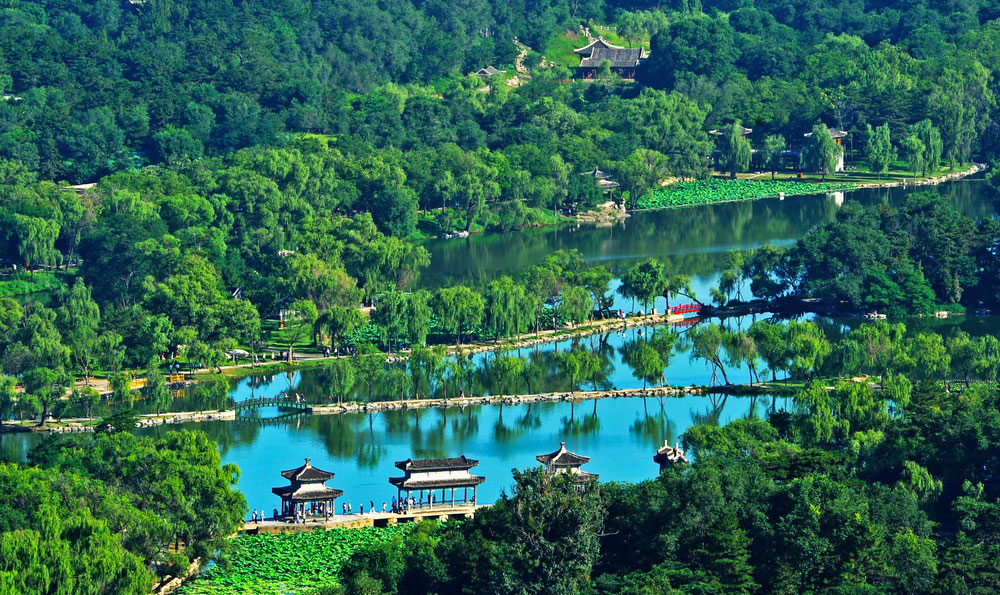
The resort consists of four zones: the palatial cluster, the lake zone, the plain, and the hills. The entire garden features waterscapes in the southeast and mountainscapes in the northwest - a miniature of the Chinese territory. It is a milestone in the history of Chinese gardens and a masterpiece of classical garden art.
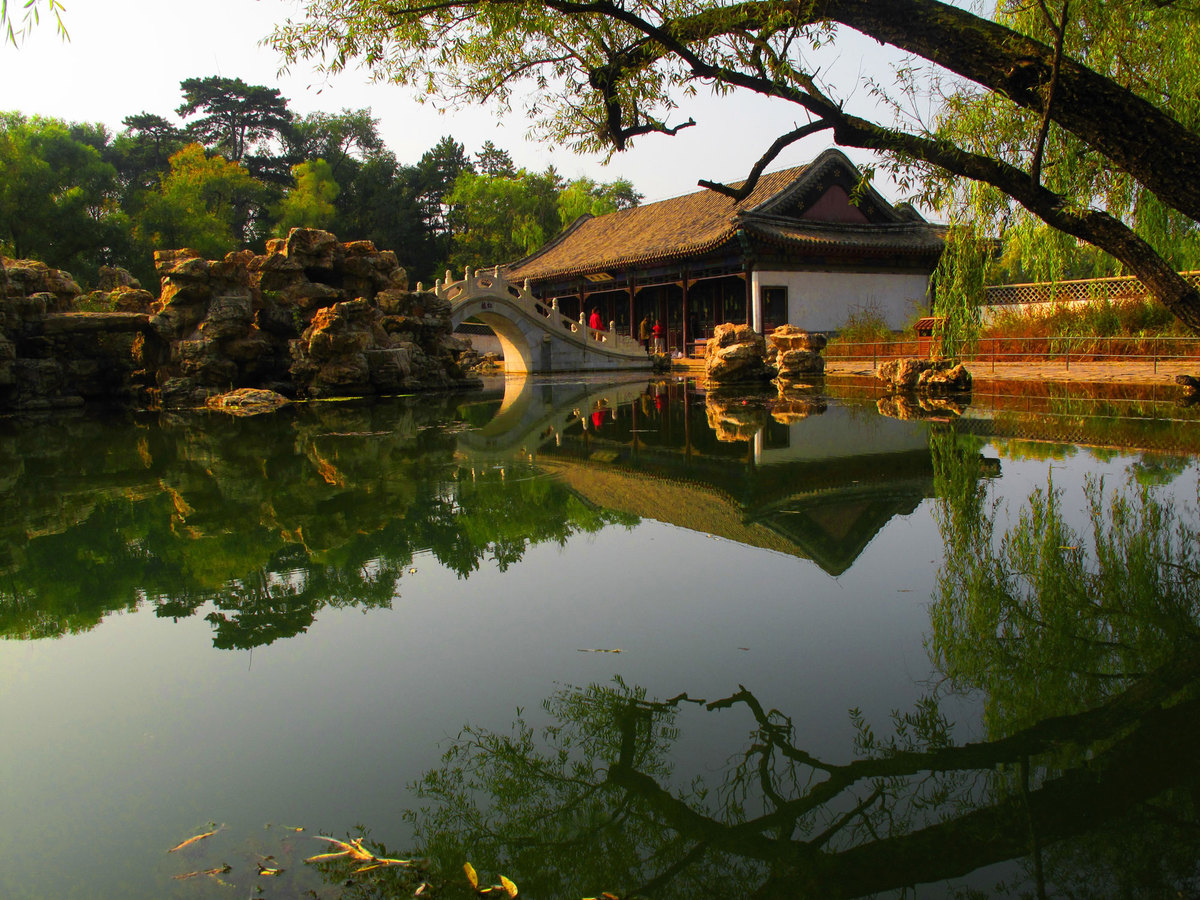
On March 4, 1961, the resort was listed as one of the first "foremost protected cultural heritage sites" by the State Council. In December 1994, it was inscribed on the World Heritage List.
Around the resort, Lamaist temples were built in the Tibetan and Xinjiang architectural style for the nobles of western and northern ethnic minorities to worship Buddha while on their pilgrimages to the emperor. Among the temples, eight were directly managed by the Qing government; collectively they were called the Eight Outlying Temples.
These magnificent temples, combining the architectural art of Han, Tibetan and other ethnic groups, were adopted by the Qing government to unite ethnic minorities in Mongolia, Xinjiang, Tibet and other regions. Most were built on sunny hillsides. Each one features a main building which stands out from the architectural complex.
Potala Palace and Travelling Palace of Panchen Lama
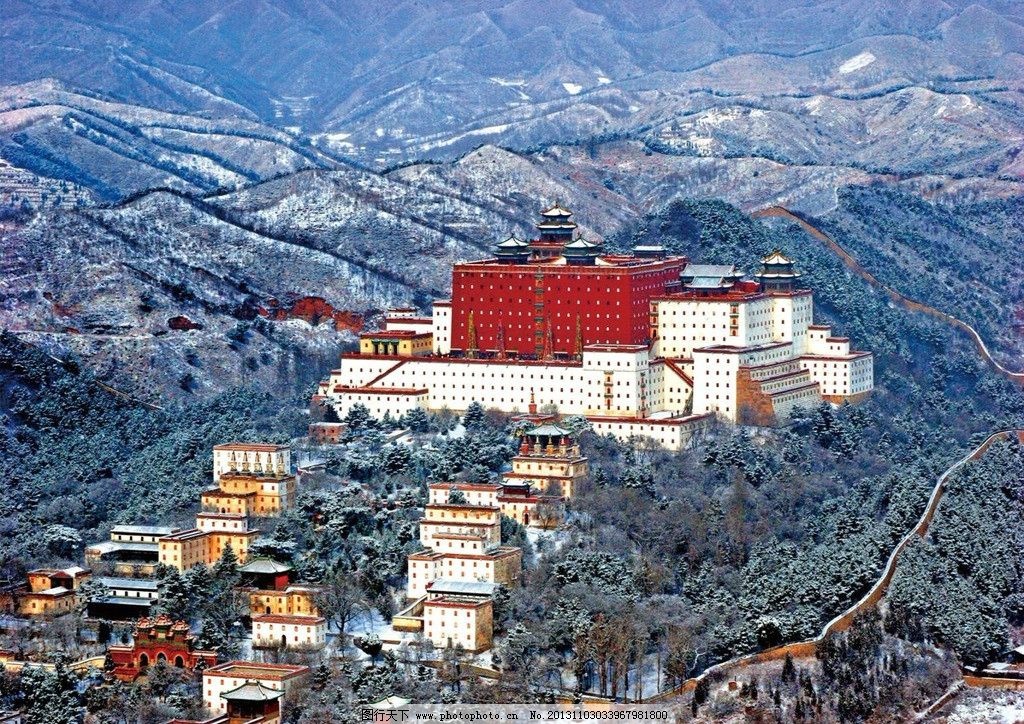
Built on the southern slope of the Shiziling Hill to the due north of the resort, the scenic spot covers an area of 257,900 square meters. It consists of the Putuo Zongcheng Temple (built in 1767) and the Xumi Fushou Temple (built in 1780).

Respectively built in imitation of the Potala Palace in Lhasa and Tashilhunpo Monastery in Shigatse city, the Putuo Zongheng Temple and the Xumi Fushou Temple are also known as the lesser Potala Palace and the Travelling Palace of Panchen Lama. They integrate the Han architectural style with the Tibetan, adding a magnificent regal tone.
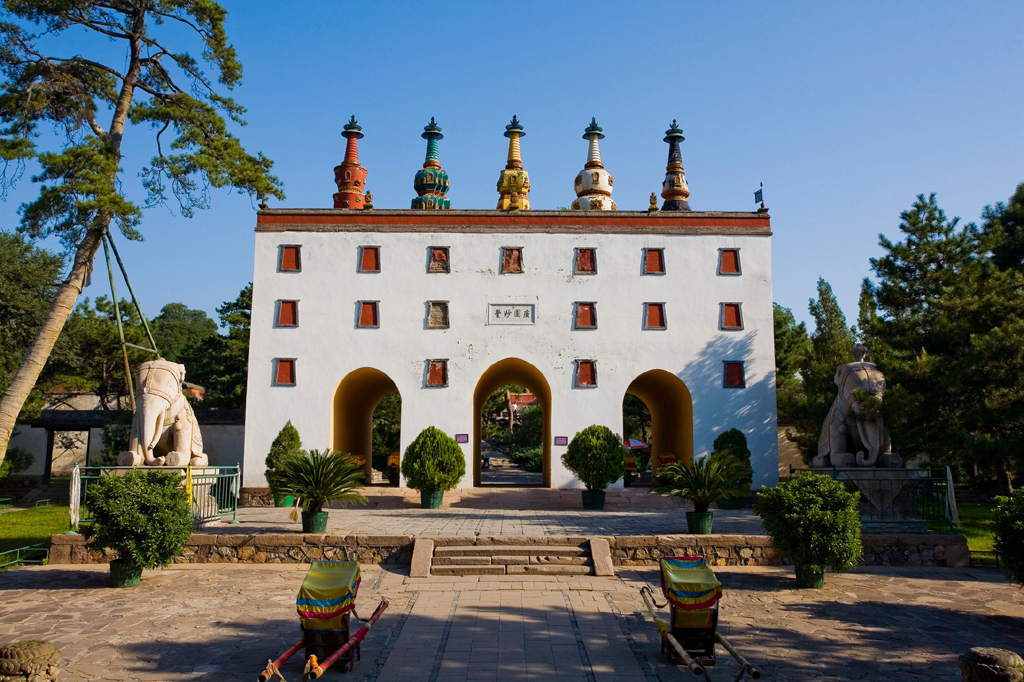
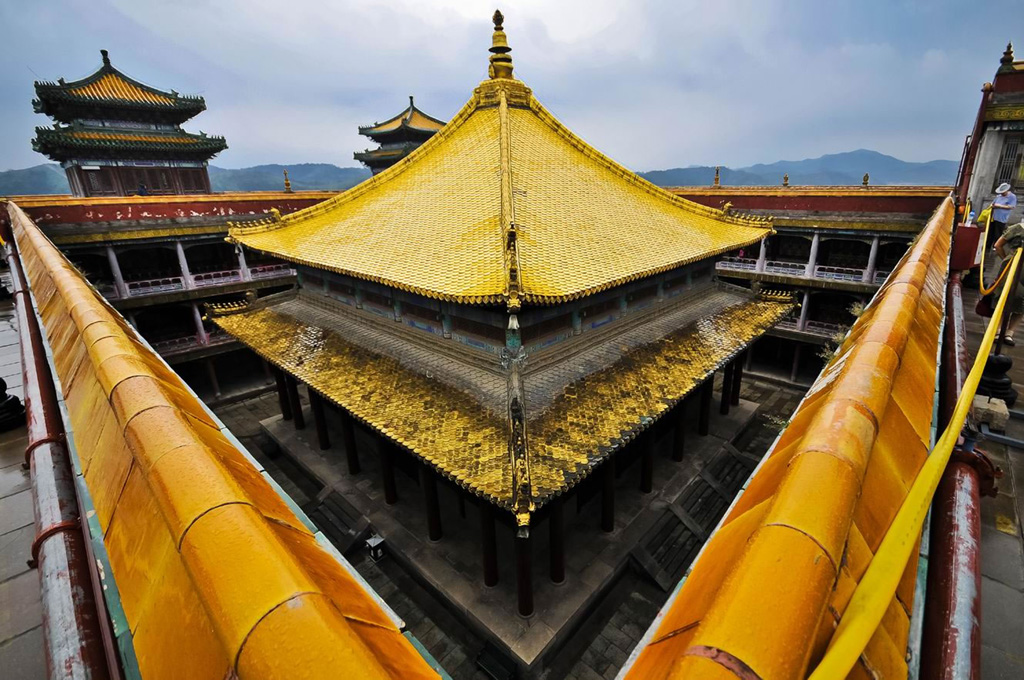
Scenic Area of the Temple of Universal Peace (Puning si)
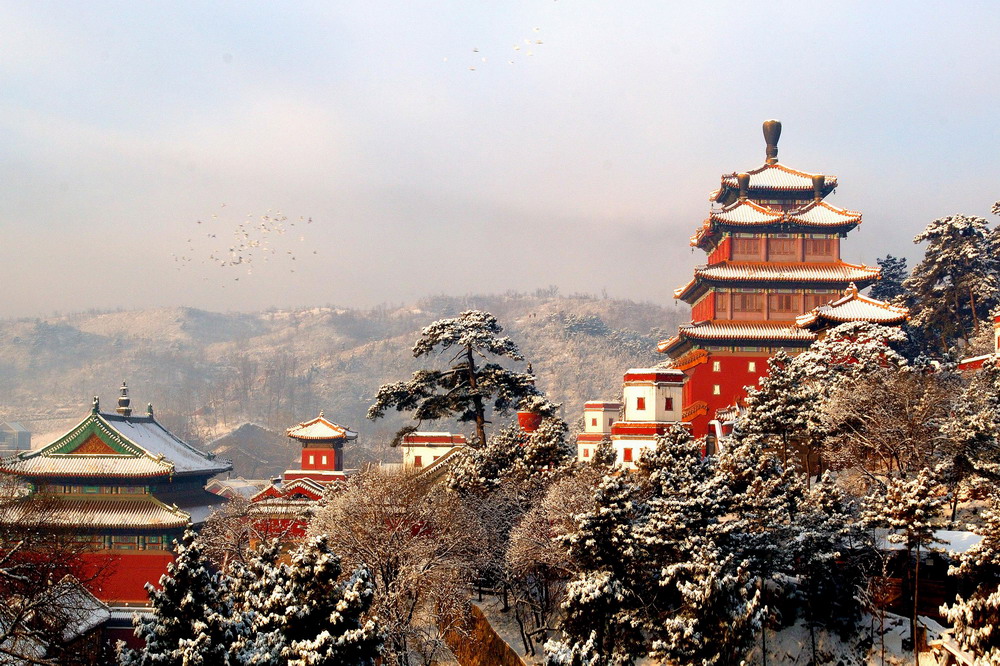
Located on the banks of the Wulie River to the northeast of the resort, it covers an area of 57,800 square meters. The scenic area consists of the Temple of Universal Peace (built in 1755) and the Monastery of Universal Blessings (Puyou si, built in 1760).
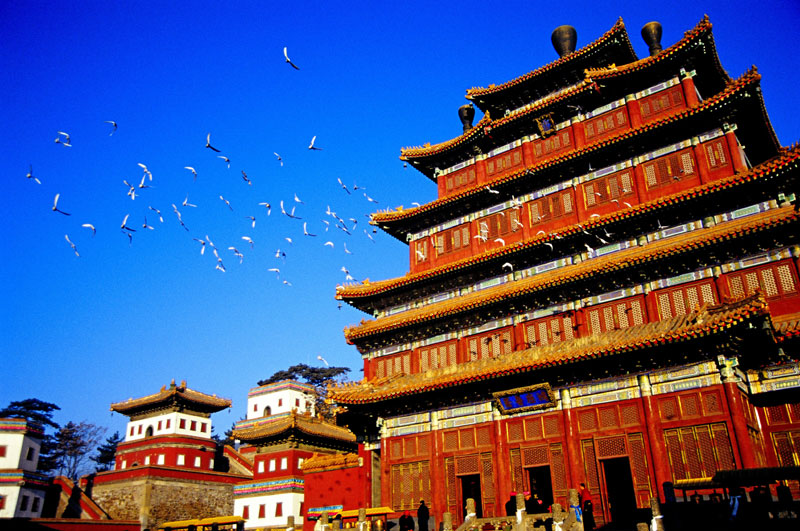
The Temple of Universal Peace enshrines the world's largest gold-lacquer wooden Buddhist statue, Avalokitesvara, who has a thousand arms and a thousand eyes. The Monastery of Universal Blessings is the largest temple in north China. Crowds of lamas gather here to study Buddhist classics and scriptures.
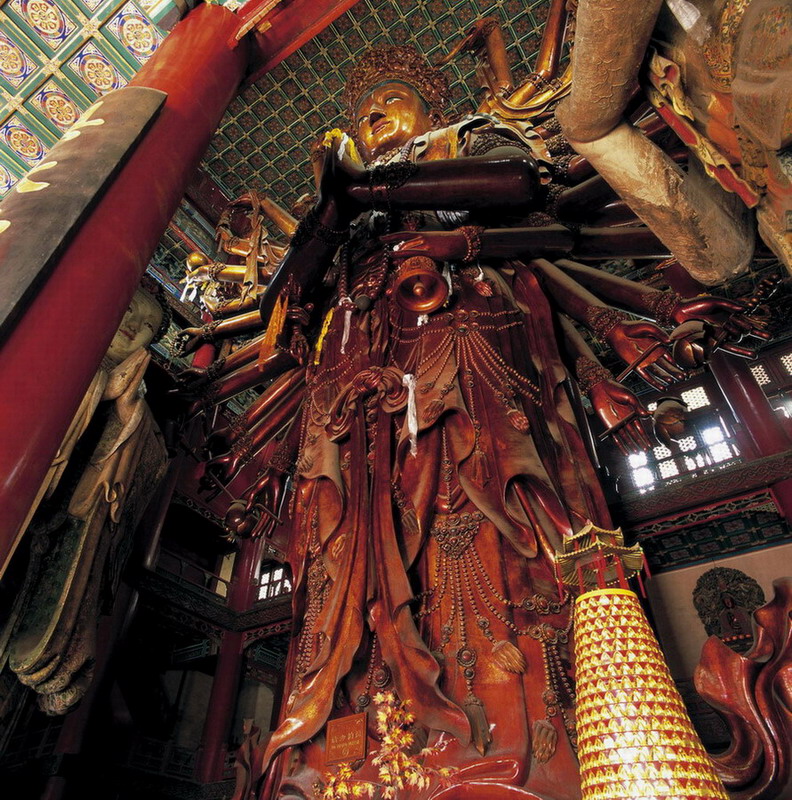
Features
 Museum Treasures
Xianyang's bronze warrior head is unique national treasure
Museum Treasures
Xianyang's bronze warrior head is unique national treasure
 Cultural Industry
New horse mascots gallop into 2026
Cultural Industry
New horse mascots gallop into 2026


